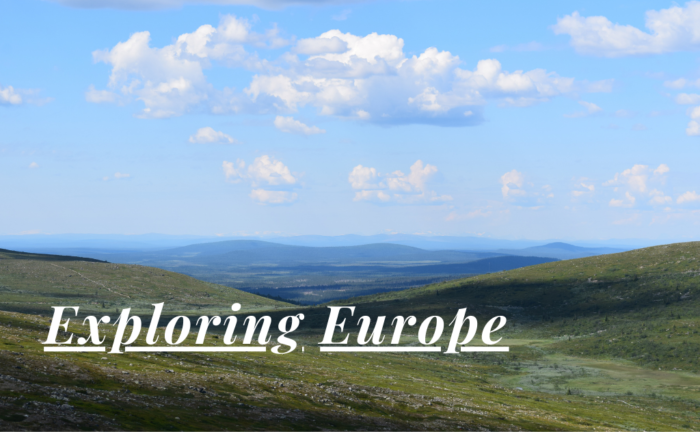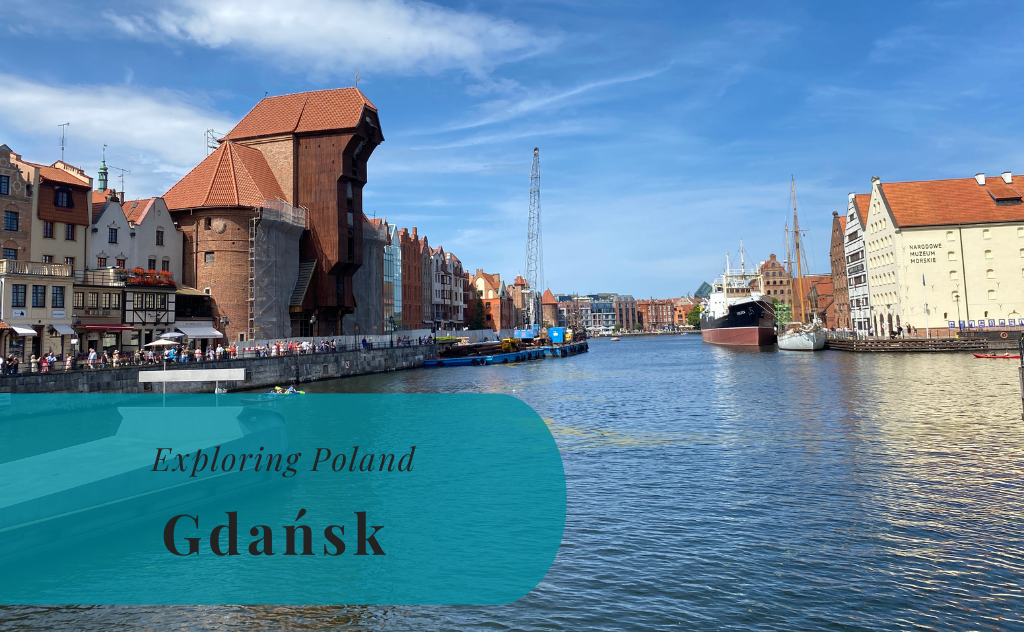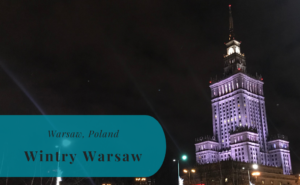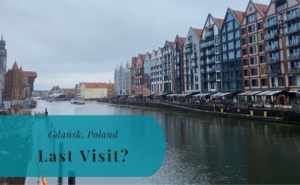Gdańsk is a city in northern Poland, maybe the home to the North Pole? It is a city with around 486.000 inhabitants that is the capital of the Pomeranian Voivodeship and the main seaport of the country. Gdańsk is a historically very important city, that over the centuries has been a part of many countries and is many times best known under its German name Danzig. Together with Gdynia and Sopot, the city forms the metropolitan area known as Trójmiasto or the Tricity in English. For visitors, this is a town with majestic clock towers, views of the Vistula River, and Hanseatic-inspired streets such as Długa Street. It is the Hanseatic past that binds Gdańsk with other Baltic cities such as Lübeck, Riga, and Stockholm.
We have been on several trips to Gdańsk, especially during 2023, read more about those adventures here:
- Gdansk, Poland – A 24 Hour Visit
- Gdańsk, Poland – A Stormy Winter Visit
- Gdańsk, Poland – Summer Day Trip from Sweden
- Gdańsk, Poland – A Repeat Summer Visit
- Gdańsk, Poland – A Late Summer Visit
- Gdańsk, Poland – A Family Day Trip
- Gdańsk, Poland – A Last Visit?


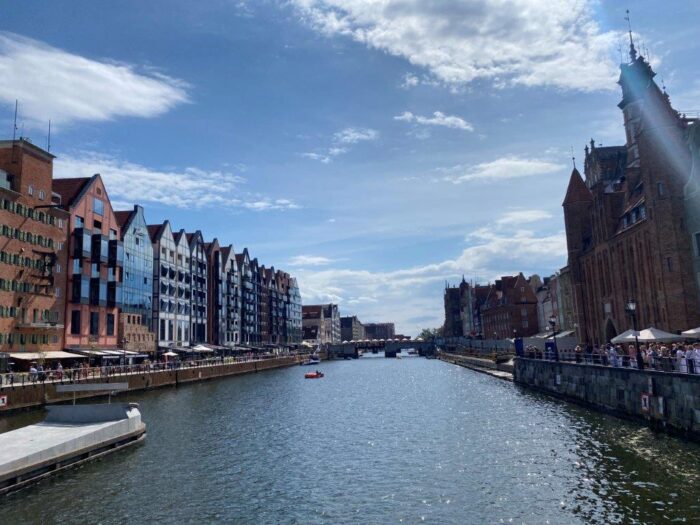




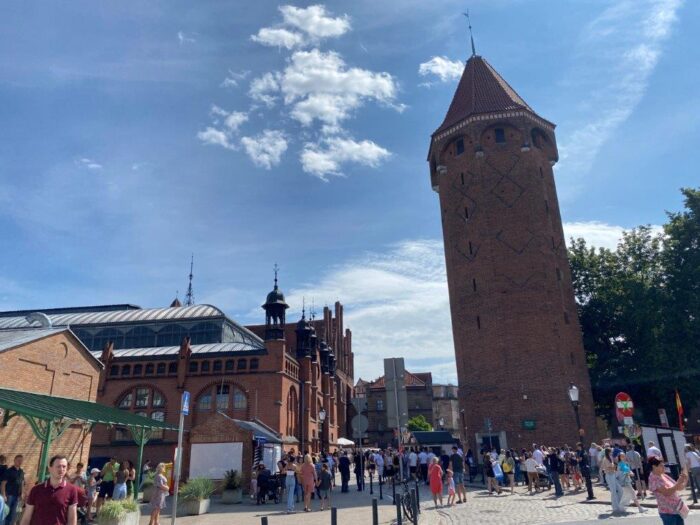



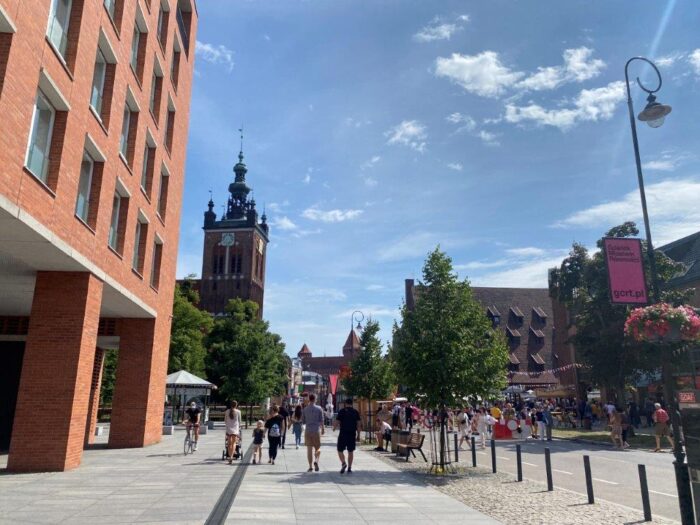

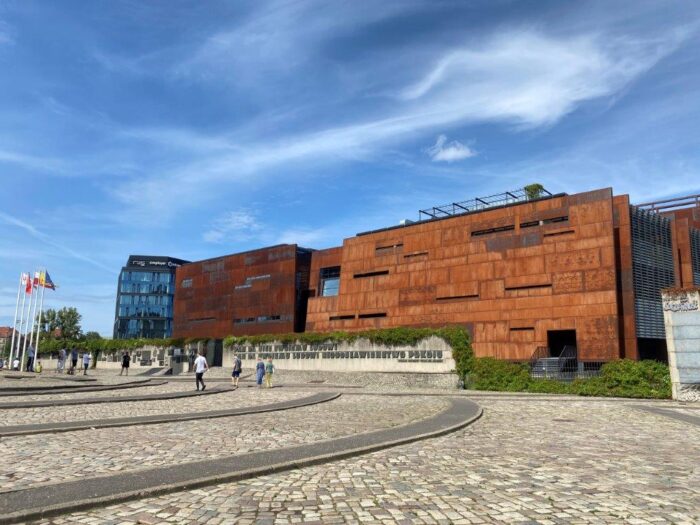

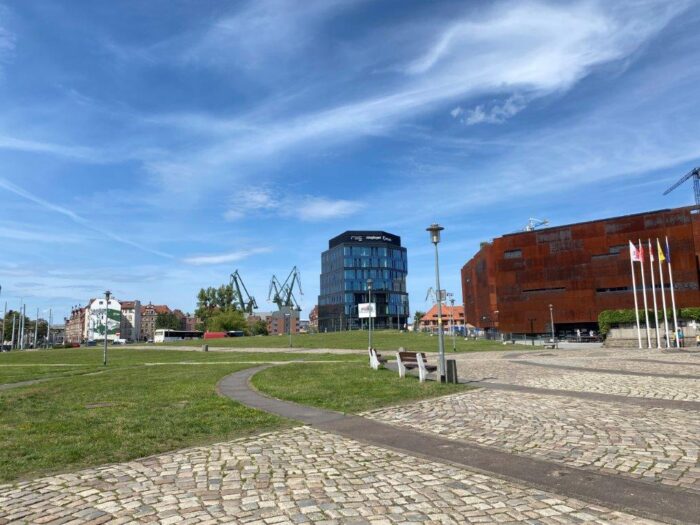


A Short History of Gdańsk
Where to start? There is probably no short history of Gdańsk. This is one of the oldest cities in Poland and was founded already in the 10th century. It was at the time under the rule of Mieszko I, the father of the first independent Polish state. The city has since been a part of kingdoms and states such as The Teutonic Order, the Kingdom of Poland, the Polish-Lithuanian Commonwealth, the Kingdom of Prussia, the German Empire, Nazi Germany, and eventually the Republic of Poland. Yes, some states are missing from that list.
Between the World Wars, the name of the city was the Free City of Danzig. This was a city-state that existed between 1920 and 1939. It was under the protection and oversight of the League of Nations and had a population with a German majority. As a free city, it was neither a part of Germany nor Poland, which was a compromise after the First World War. Danzig was already at this time the most important export route for goods from Poland. It was the friction between Danzig and Poland that caused the Polish establishment of an ammunition depot at Westerplatte in the 1920s.
Friction between Germany and Poland also increased over the control of Danzig and the crisis sped up in 1938. This crisis eventually escalated and resulted in the German battleship Schleswig-Holstein opening fire on the Polish garrison at Westerplatte on the first of September 1939. That broadside that was fired at Westerplatte is considered to be the first shot of the Second World War.
The Nazi regime controlled Danzig from 1939 up until 1945 when the city was liberated by the Soviet Red Army. The war did not only result in atrocities committed within the city. It also saw the city being in large parts destroyed. After liberation, the city had around 124.000 German inhabitants who during the following years were expelled. That is to be compared to the city’s around 8.000 Polish inhabitants. The peace treaty resulted in Gdańsk becoming a part of the new Polish People’s Republic. The city was during the 1940s and 1950s repopulated by Polish people from other parts of Poland, mainly from central Poland but also a lot of people from the former Polish territories that were annexed by the Soviet Union. Gdansk has since the war slowly been rebuilt and has more recently established itself among the large modern cities of Europe.
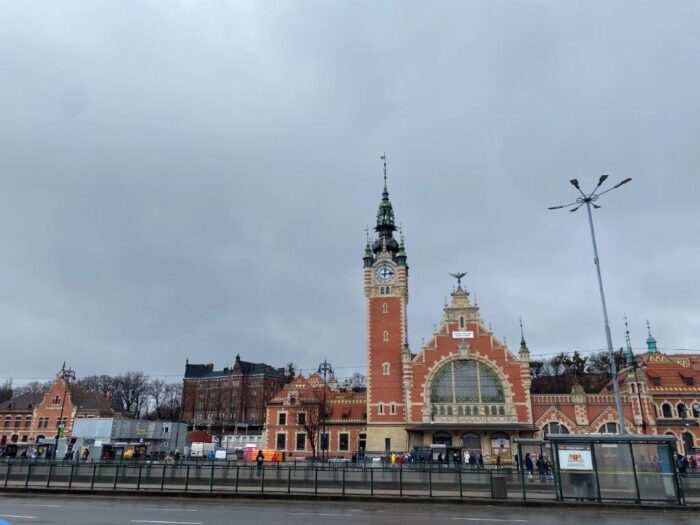

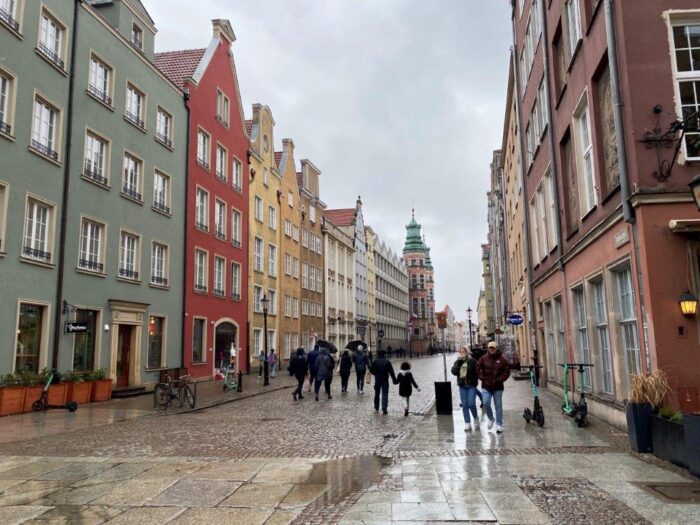


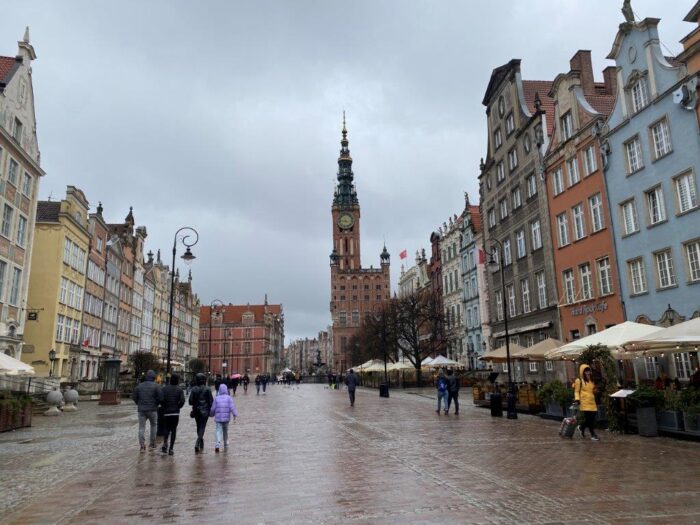



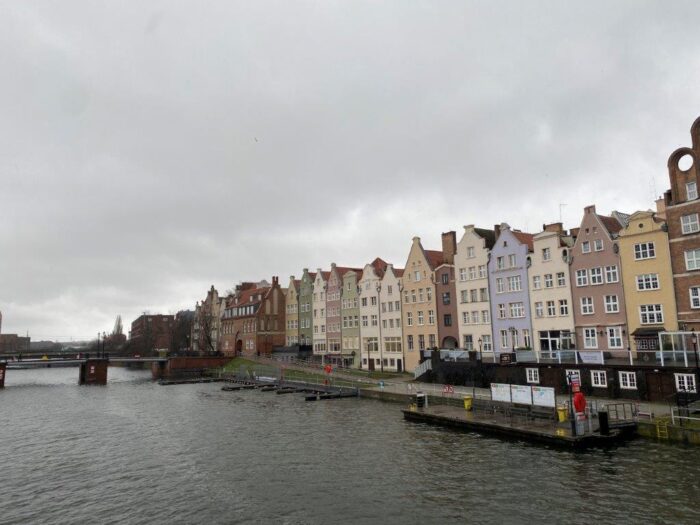

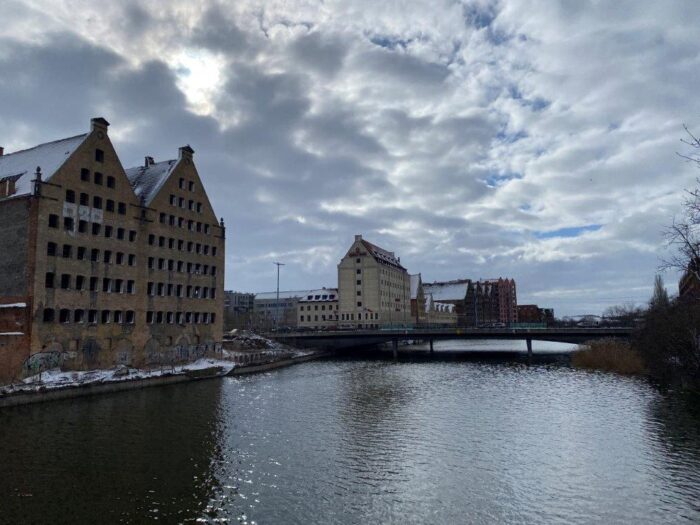





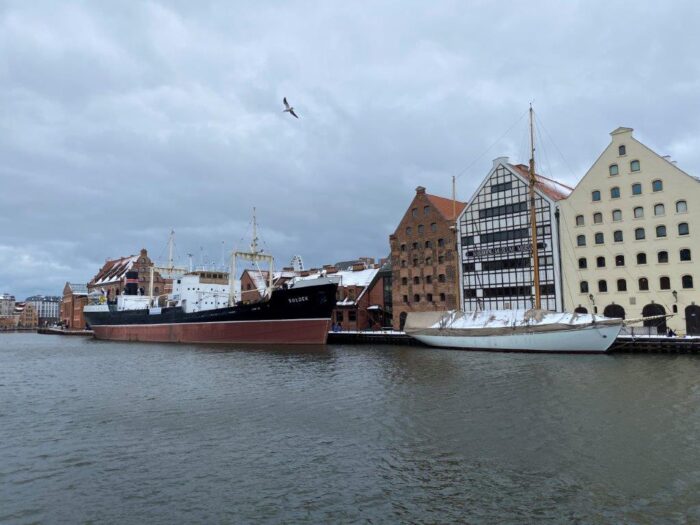

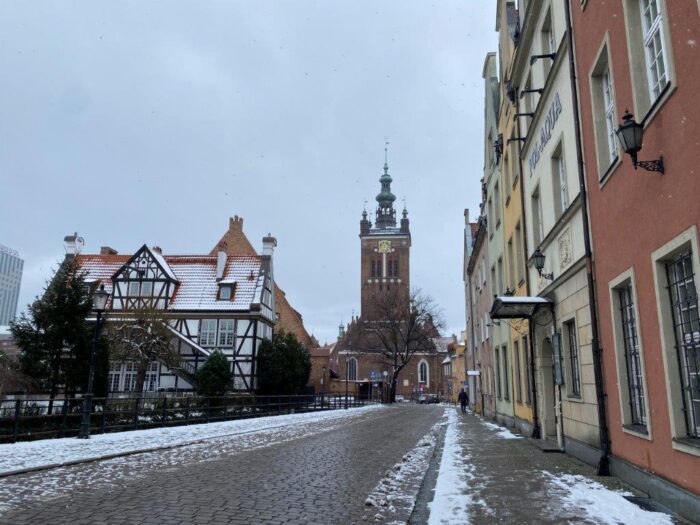


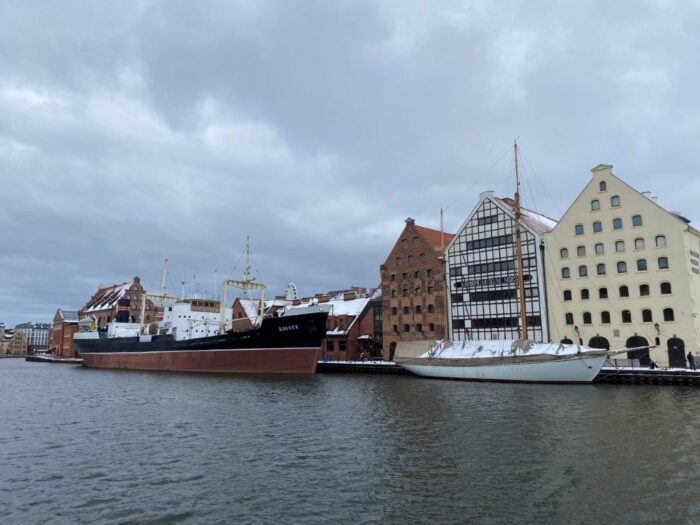
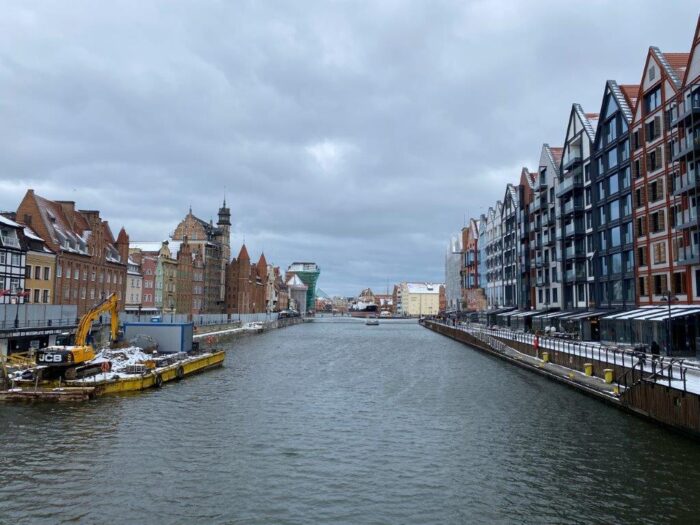
Things to Do and See
Walking around the streets of Gdańsk during a sunny summer day will grant you some amazing sights of the colorful buildings, the many church towers, the ships on the river, and a lot more. Długa Ulica is one of the main tourist streets, but the whole central area is walkable and there are usually plenty of tourists around. These central streets are lined by restaurants, cafés, bars, and souvenir shops.
The city gates are famous tourist sights and so is the town hall with its high tower. The area around the Radunia Canal has the picturesque small Dwór Cechu Młynarzy and the impressive map of the northern sky by Johannes Hevelius. Walking along the Motława River to the north will take you towards the old shipyards. This is an industrial area that in itself offers some interesting sights that are a big contrast to the colorful views of the Hanseatic-inspired buildings in the center.
There might no longer be many shops along the central streets of Gdańsk. These shops have instead been concentrated in huge shopping centers. The two most central ones are the Gdańsk Forum and the Galeria Handlowa Madison. Right next to the train station of Gdańsk Wrzeszcz there are two more, the Galeria Bałtycka and the Galeria Metropolia. These are just a few of many shopping centers in the city with plenty more in its vicinity.
If you feel for some more diversity during your exploration of Polish Pomerania, there are plenty of easy excursions within the Trójmiasto. The local trains can take you to neighbouring Gdynia and Sopot. Gdynia is a large city itself with some more maritime sights. Sopot is one of the main seaside resorts along the Polish Baltic Sea coast and has kilometer after kilometer of sandy beaches.
But let us have a look at five of the main sights in Gdańsk.
Gdańsk Town Hall
The Gdańsk Town Hall is on the tourist street of Ulica Długa in the borough of Śródmieście. Construction of the town hall began already in the 14th century and has since seen several expansions. The building was severely damaged during the Second World War and the current reconstruction was completed in 1952. It is the high narrow tower that has become one of the many symbols of the city with a height of around 83 meters.
Brama Wyżynna
Brama Wyżynna is one of the city gates of Gdańsk. It is currently on the outskirts of the old town and houses the local tourist information office. The gate was completed in 1575 and was once joined by the city’s former fortifications, being the main entrance to the city.
Brama Zielona
Brama Zielona, or the “Green Gate” separates the tourist street of Długi Targ from the Motława River. The gate was completed in 1568 and is one of the main tourist sights in the city. The building is today home to the National Museum.
Brama Żuraw
Brama Żuraw is another one of the city gates that are common on the local postcards. The gate was completed in 1444 and consists of two massive brick towers with a protruding building in between them. That part was home to a crane that was used for loading and unloading goods from ships. The gate did not survive the liberation of the Red Army and the current construction is a reconstruction from the 1950s.
Bazylika Mariacka
Bazylika Mariacka, or “St. Mary’s Church”, is one of the many medieval churches of Gdańsk. There are older churches in the city, but none as majestic and massive as this catholic church. It is one of the largest brick churches in the world, with only the San Petronio Basilica in Bologna as confirmed larger. The Munich Frauenkirche and the Ulm Minister are of similar sizes as Bazylika Mariacka. The construction of the church began in 1343.
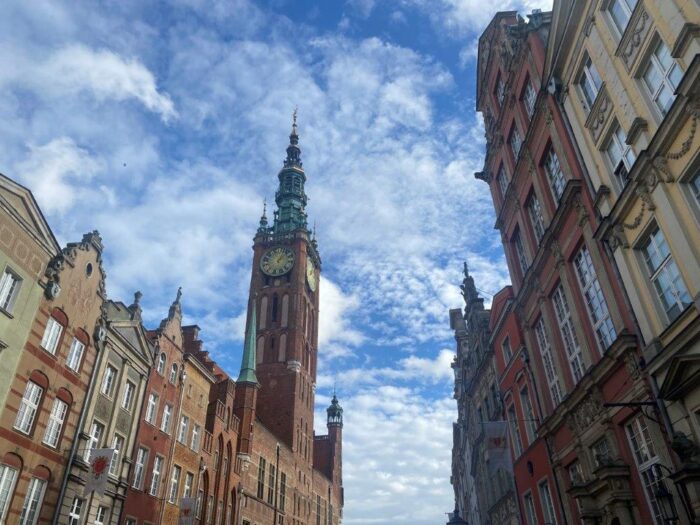

















How to Get to Gdańsk
- Flights: The closest major airport is Gdańsk Lech Wałęsa Airport (GDN), which is a short distance to the west of the city.
- Car: Gdańsk lies on the northern coast of Poland, at the intersection of several major roads such as the E75 and the E77.
- Train: The main train station is the Gdańsk Główny, but there are several smaller stations in the city. Here you will find both local and regional trains, as well as long-distance domestic trains to cities like Warsaw and Kraków.
- Ferry: Gdańsk has the largest port in Poland, but the passenger ferries are a bit more limited. The main route to and from here is to Nynäshamn in Sweden with Polferries. Stena Line also has a route from nearby Gdynia to Karlskrona in southern Sweden.
The driving distance from 5 major Polish cities, according to Google Maps:
- Warsaw – 340 kilometers (3 h 20 min)
- Kraków – 598 kilometers (5 h 10 min)
- Wrocław – 483 kilometers (4 h 20 min)
- Poznań – 311 kilometers (2 h 50 min)
- Lublin – 507 kilometers (5 h)
Looking to Explore more of Poland and Europe?

